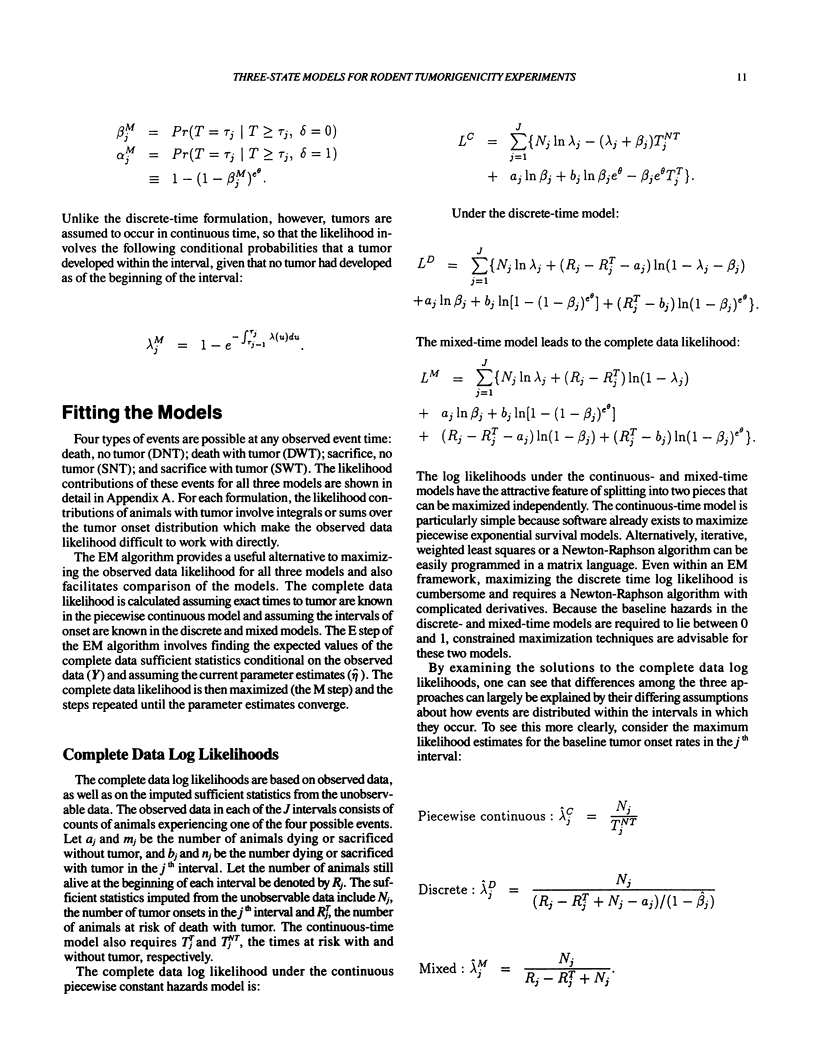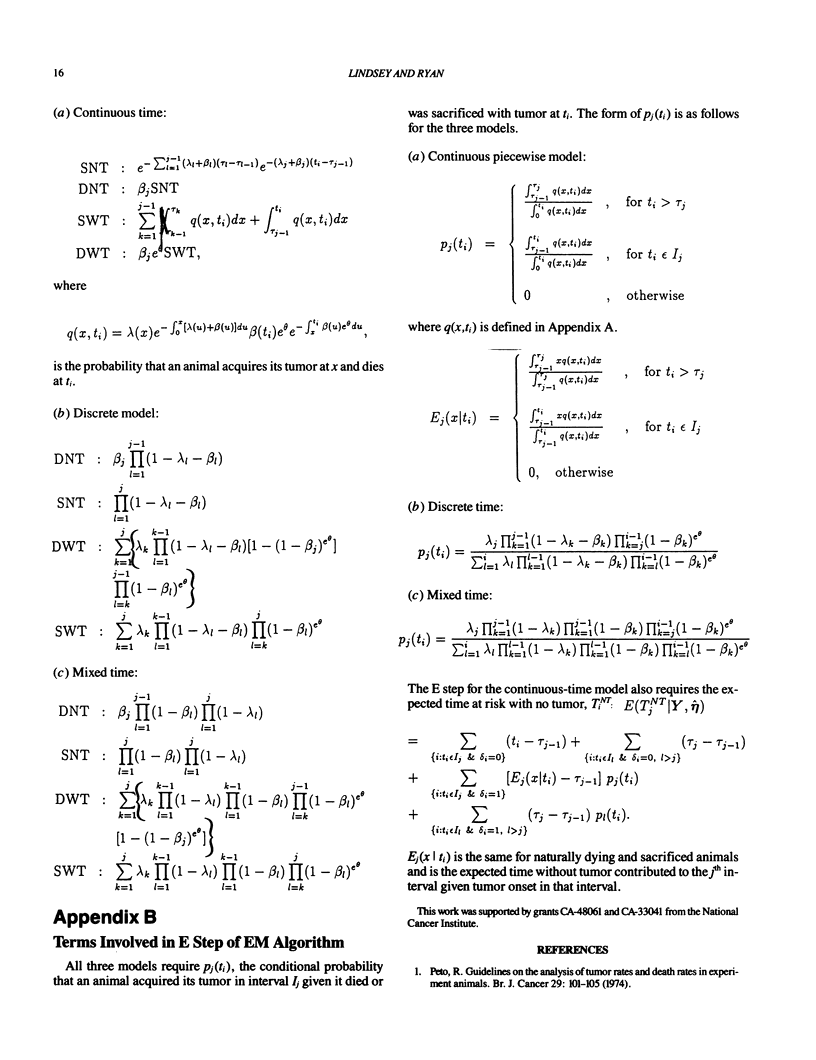Abstract
The three-state illness-death model provides a useful way to characterize data from a rodent tumorigenicity experiment. Most parametrizations proposed recently in the literature assume discrete time for the death process and either discrete or continuous time for the tumor onset process. We compare these approaches with a third alternative that uses a piecewise continuous model on the hazards for tumor onset and death. All three models assume proportional hazards to characterize tumor lethality and the effect of dose on tumor onset and death rate. All of the models can easily be fitted using an Expectation Maximization (EM) algorithm. The piecewise continuous model is particularly appealing in this context because the complete data likelihood corresponds to a standard piecewise exponential model with tumor presence as a time-varying covariate. It can be shown analytically that differences between the parameter estimates given by each model are explained by varying assumptions about when tumor onsets, deaths, and sacrifices occur within intervals. The mixed-time model is seen to be an extension of the grouped data proportional hazards model [Mutat. Res. 24:267-278 (1981)]. We argue that the continuous-time model is preferable to the discrete- and mixed-time models because it gives reasonable estimates with relatively few intervals while still making full use of the available information. Data from the ED01 experiment illustrate the results.
Full text
PDF








Selected References
These references are in PubMed. This may not be the complete list of references from this article.
- Dewanji A., Kalbfleisch J. D. Nonparametric methods for survival/sacrifice experiments. Biometrics. 1986 Jun;42(2):325–341. [PubMed] [Google Scholar]
- Dinse G. E. Constant risk differences in the analysis of animal tumorigenicity data. Biometrics. 1991 Jun;47(2):681–700. [PubMed] [Google Scholar]
- Dinse G. E. Estimating tumor incidence rates in animal carcinogenicity experiments. Biometrics. 1988 Jun;44(2):405–415. [PubMed] [Google Scholar]
- Finkelstein D. M. A proportional hazards model for interval-censored failure time data. Biometrics. 1986 Dec;42(4):845–854. [PubMed] [Google Scholar]
- Gaylor D. W. The ED01 study: summary and conclusions. J Environ Pathol Toxicol. 1980;3(3 Spec No):179–183. [PubMed] [Google Scholar]
- Hoel D. G., Walburg H. E., Jr Statistical analysis of survival experiments. J Natl Cancer Inst. 1972 Aug;49(2):361–372. [PubMed] [Google Scholar]
- Kodell R. L., Nelson C. J. An illness-death model for the study of the carcinogenic process using survival/sacrifice data. Biometrics. 1980 Jun;36(2):267–277. [PubMed] [Google Scholar]
- Mitchell T. J., Turnbull B. W. Log-linear models in the analysis of disease prevalence data from survival/sacrifice experiments. Biometrics. 1979 Mar;35(1):221–234. [PubMed] [Google Scholar]
- Peto R. Editorial: Guidelines on the analysis of tumour rates and death rates in experimental animals. Br J Cancer. 1974 Feb;29(2):101–105. doi: 10.1038/bjc.1974.45. [DOI] [PMC free article] [PubMed] [Google Scholar]
- Portier C. J., Dinse G. E. Semiparametric analysis of tumor incidence rates in survival/sacrifice experiments. Biometrics. 1987 Mar;43(1):107–114. [PubMed] [Google Scholar]
- Prentice R. L., Gloeckler L. A. Regression analysis of grouped survival data with application to breast cancer data. Biometrics. 1978 Mar;34(1):57–67. [PubMed] [Google Scholar]


